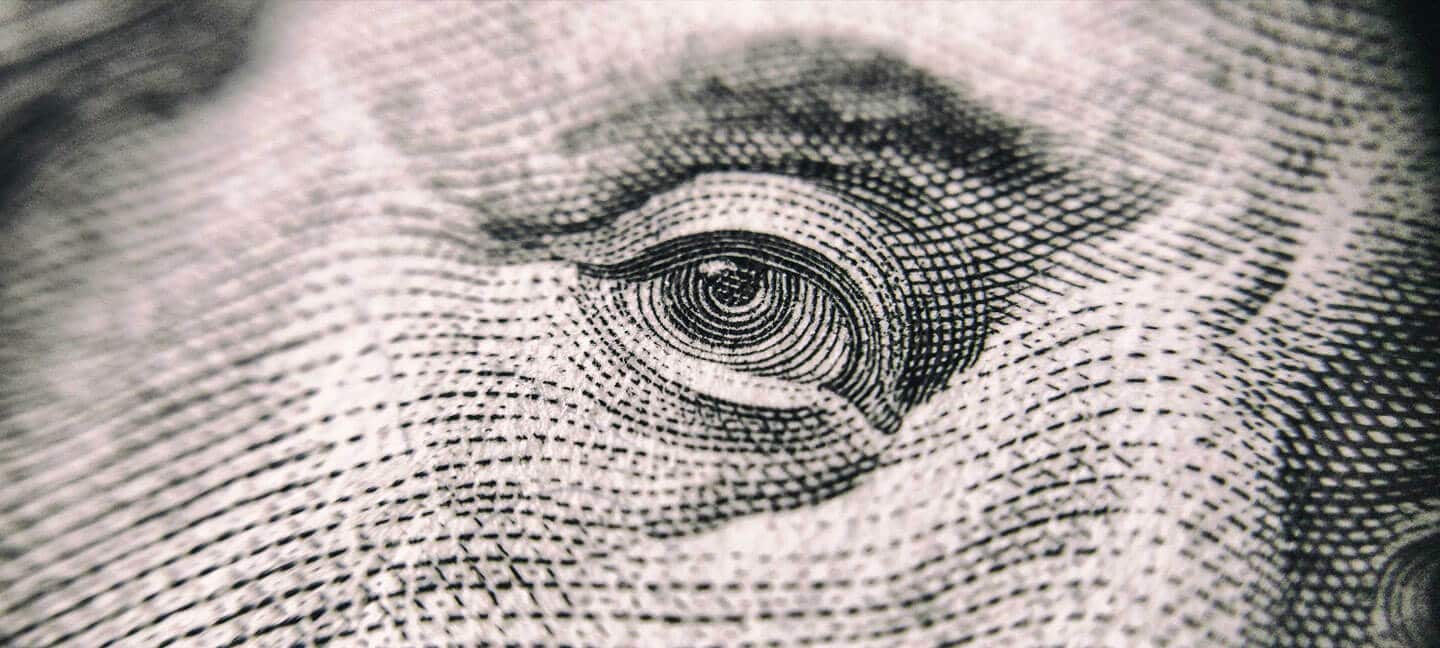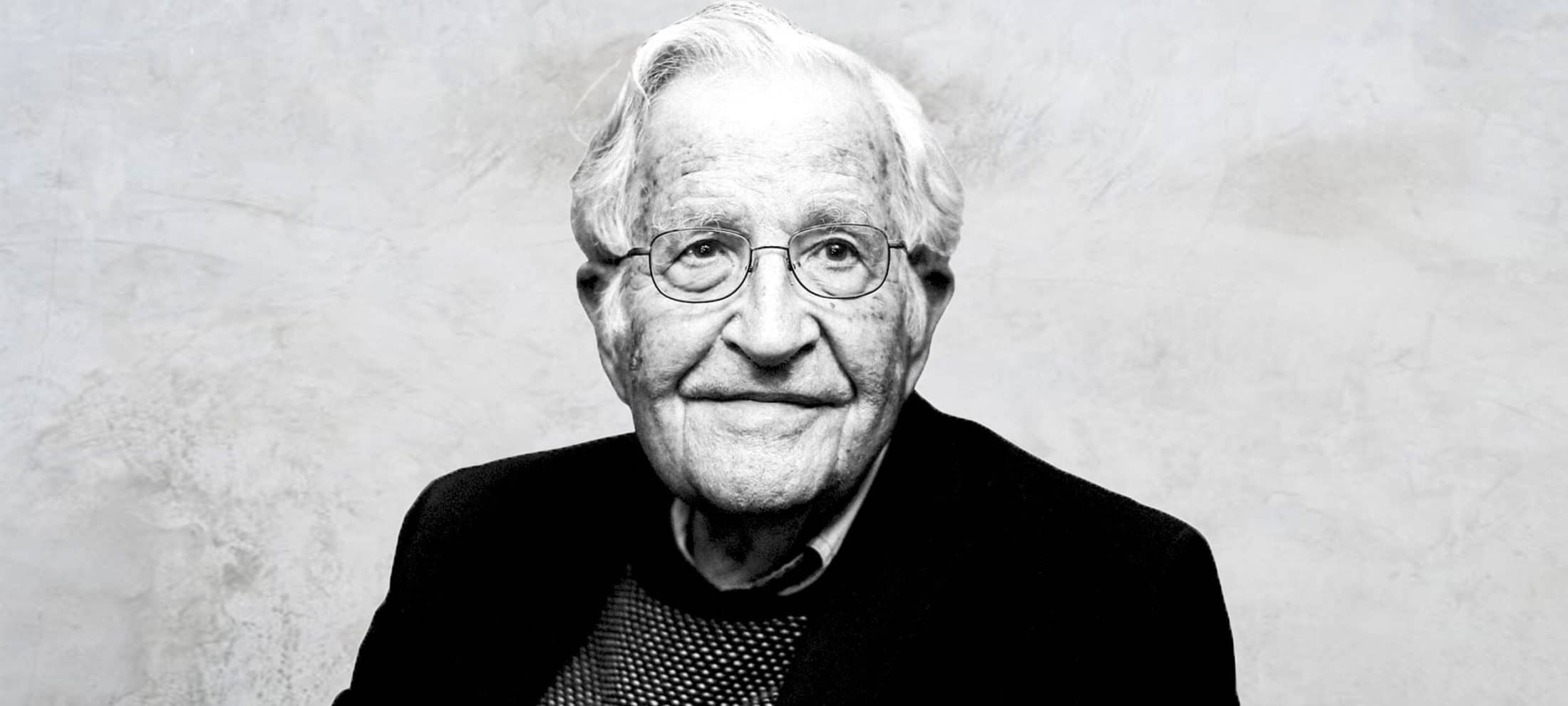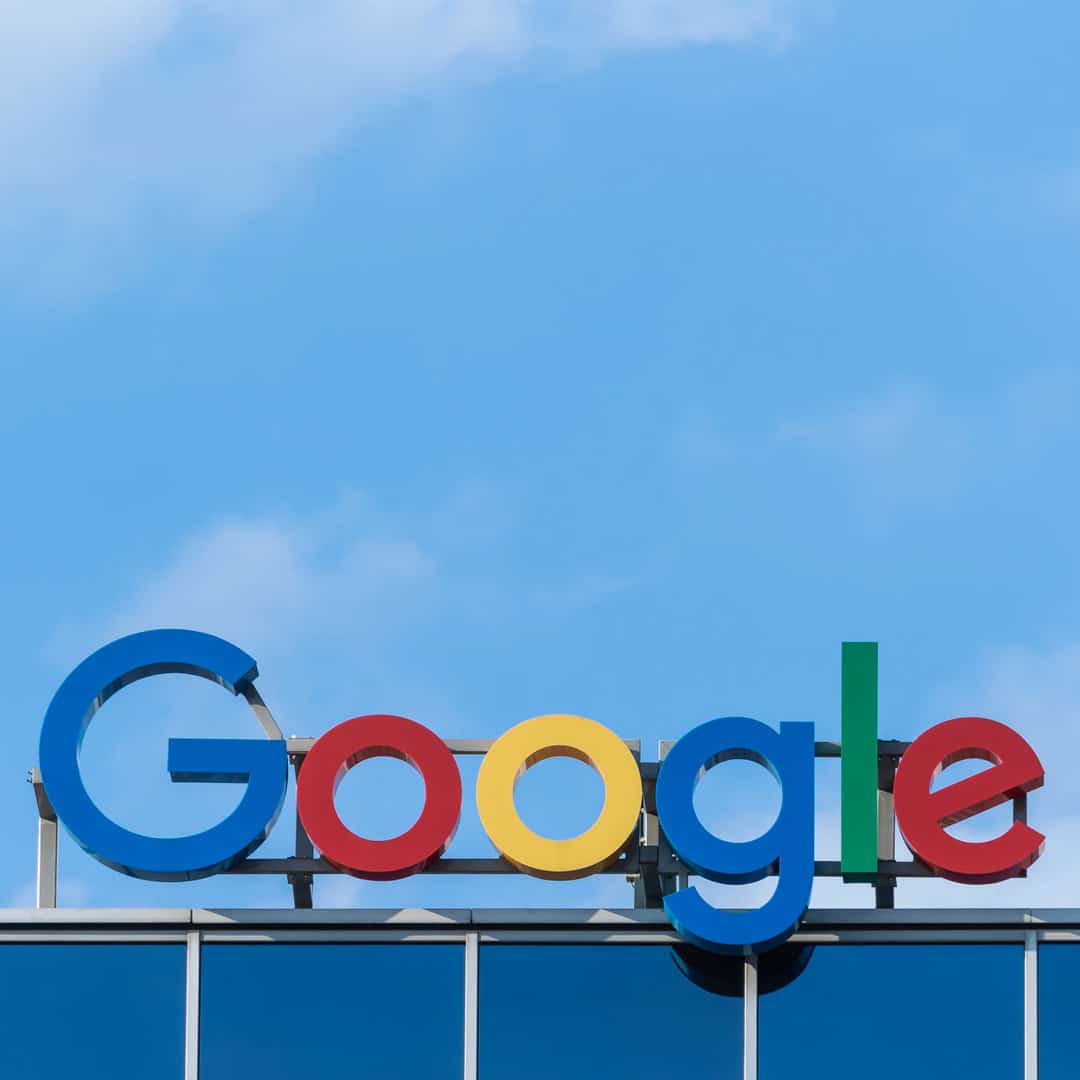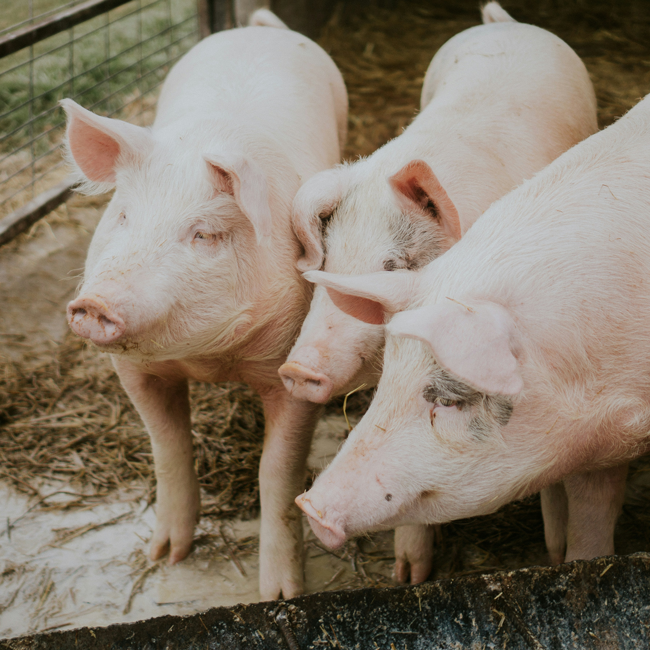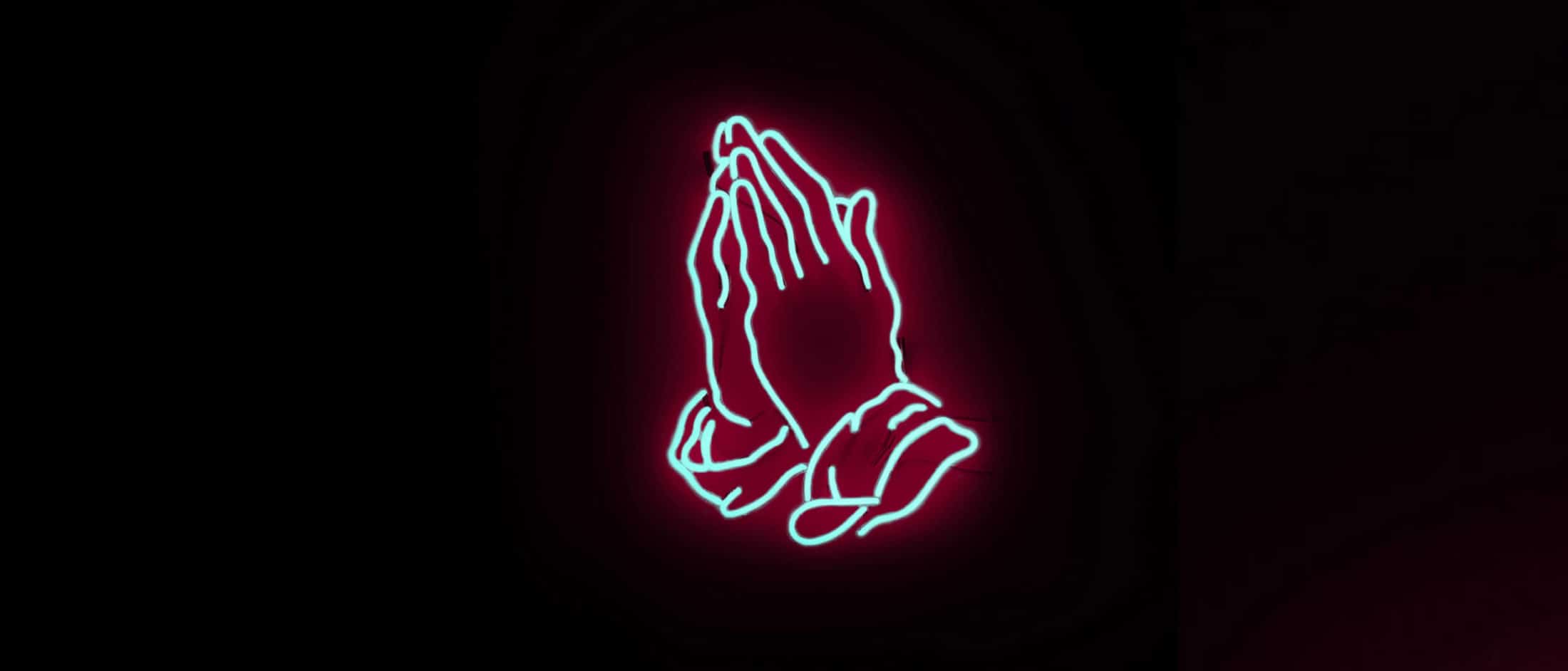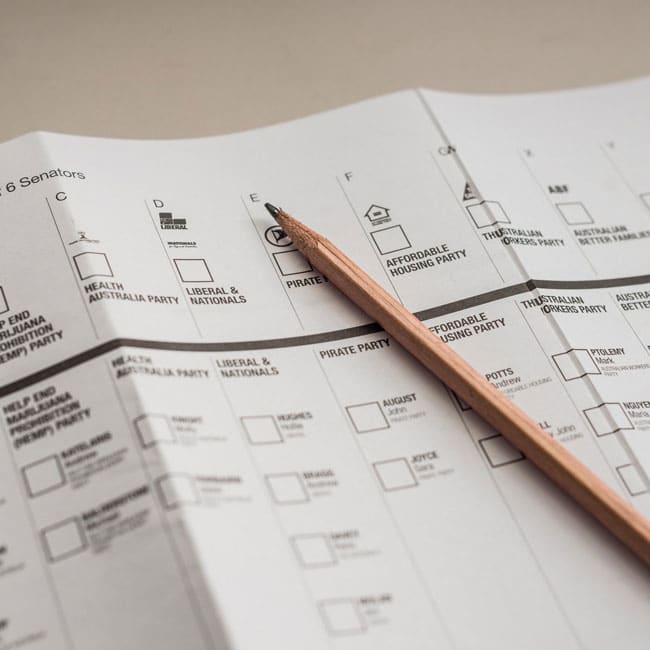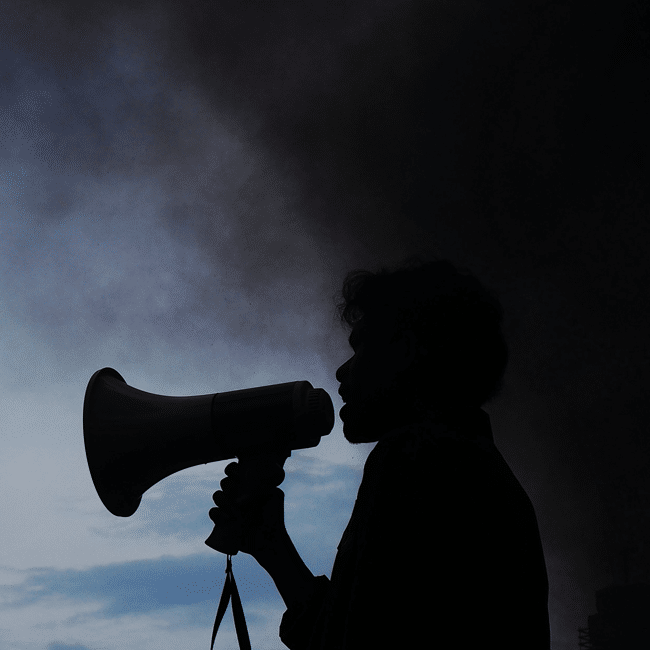From capitalism to communism, explained

From capitalism to communism, explained
Opinion + AnalysisRelationships
BY The Ethics Centre 19 NOV 2018
Everything, from your clothes to your phone to the train you last caught, has gone through what economists call ‘the means of production’.
This is the way a commercial good or service is created and sold, all the way from its raw materials to how it arrives in your hands… or to your platform.
Most of these things (also referred to as capital) can only be created as a result of collective effort. No individual can reliably ensure everyone in a country of twenty-five million has a safe way to dispose of their waste or a place to go to when they’re sick. One person can’t even meet the most basic requirement of that population and ensure sure everyone is fed.
Of course, these things cost money to maintain. Whenever cost is involved, people want to know who pays. This is where it gets hairy. If one person owns ‘the means of production’, they have to pay for everything – and keep any and all profit made. If everyone involved owns ‘the means of production’ collectively, they share the cost – and any profit.
This is where the branches of different economic systems begin.
Capitalism
Capitalism is an economic systemwhere the ‘means of production’ and resulting capital are owned by private individuals and businesses. It is based on voluntary relationships of supply and demand instead of centralised (usually government) planning.
This system is rooted in classical liberal philosophy and its conception of the rational, freethinking, autonomous individual. It claims market competition forces people to act in a way that benefits others, regardless of their intention.
Socialism
Socialism is an economic system borne out of opposition to capitalism where the ‘means of production’ are collectively owned and shared. It prioritises production for use rather than profit and achieves this through centralised planning – like a government.
The value of whatever is produced is determined by the amount of time and labour required, not market supply and demand. Socialism claims sharing resources and work according to need, rather than competition, creates a more equitable and secure society.
Communism
Communism is a utopian political economic system where a society is reorganised without hierarchy, states, money or class. The ‘means of production’ are shared communally and private property is non-existent or severely restricted. Karl Marx and Friedrich Engels published the seminal political pamphlet on this, A Communist Manifesto in 1848.
Communism’s modern adherents claim it has not happened yet, while its critics cite Maoist China, Stalin’s Soviet Union, the Cold War, and many other historical crises to signal its danger.
Fascism
Fascism is an economic system based on self-sufficiency of the state, ethnic purity, and one-party ownership over the means of production. There’s usually a dictatorial leader and little to no tolerance of political opposition. Fascism claims the strength of a nation comes from unity and unity depends on fixed identities.
Though commonly associated with Nazi Germany, many other countries have been considered fascist at some point too, such as Brazil, Iraq and Japan.
Laissez-faire
Laissez-faire translates to ‘leave alone’ or ‘let them do’. Laissez-faire is an economic system that leaves transactions and trade free from government regulation, subsidies, tariffs, and privileges. It claims the economy is a natural system and the market is an organic part of it. Government interference hinders something nature can mediate.
Which economic-political system is best?
When discussing what economic system we prefer, it’s important to know what we’re talking about. The economies of most modern countries today are rarely pure capitalism or pure socialism. Most have a mixed capitalist system where private individuals or businesses make profit off labour, while operating within government regulations.
At the bare bones of economic theory, you find philosophy. Questions like ‘What is the purpose of government?’, ‘What is a human right?’, ‘What can we expect from our relationships?’, or ‘What does equality and justice look like?’ inform the different perspectives that manifest into policy.
Which one would you stand for?
Follow The Ethics Centre on Twitter, Facebook, Instagram and LinkedIn.
Ethics in your inbox.
Get the latest inspiration, intelligence, events & more.
By signing up you agree to our privacy policy
You might be interested in…
Opinion + Analysis
Relationships
The tyranny of righteous indignation
Opinion + Analysis
Relationships
The ANZAC day lie
Opinion + Analysis
Relationships
Freedom and disagreement: How we move forward
Opinion + Analysis
Relationships, Politics + Human Rights
How to have a difficult conversation about war
BY The Ethics Centre
The Ethics Centre is a not-for-profit organisation developing innovative programs, services and experiences, designed to bring ethics to the centre of professional and personal life.
You don’t like your child’s fiancé. What do you do?

You don’t like your child’s fiancé. What do you do?
Opinion + AnalysisRelationships
BY The Ethics Centre 18 NOV 2018
Your child is getting married. A mixture of pride, grief and trepidation have been gathering steam for a while now.
You don’t know how you’re going to feel on the day, but when you see your child go through one of the most ubiquitous rites of passage there is, you can’t guarantee there won’t be tears of love.
Except for one snag.
You don’t like their fiancé.
It’s heartbreaking. What should have been a moment of elation at your child’s joy is soured. You don’t understand why they’re making such a huge commitment to their partner or how you will live with that choice.
Perhaps you don’t think they’re good enough, or you don’t get along with them as much as you’d like. Maybe you see them bringing unhappiness into your child’s life – now or in the future. They might have strange attitudes to parenting or relationships. They might seem plain dangerous. Either way, there’s one question you’re asking…
What should you do?
In this situation, consider what a good parent looks like. Do they support, protect, and nurture their child? Do they allow them to make their own mistakes? Are they honest and fair?
Being honest may mean causing great hurt. Being fair may mean accepting the consequences of your child’s independence. Protecting your child may mean treating your fears as truth. But to what end? And by what means?
Wedding dilemmas splitting you in two? Book a free appointment with Ethi-call. A non-partisan, highly trained professional will help you see through chiffon to make decisions you can live by.
On one hand, what actions present you as the person you want to be? Are they the actions of someone courageous, patient, and wise? Or someone petty, panicky, and controlling?
On the other hand, what actions risk damaging the relationship between you and your child? Or your future child-in-law? What situation necessitates speaking up? Or more drastic measures?
If you decide your concerns aren’t that serious, is there a way you could use this situation to build a stronger relationship with your child and a better understanding of the partner they love?
A lot of the time, when we are faced with an ethical dilemma, we see in binaries. Black or white, either or. Taking the time to slow down our thinking and consider the situation in different ways can help new pathways emerge – even if that means stepping back and living with the decisions another person has made.
So, before you end up expressing your reservations in panic, blame, and threats to boycott the wedding, take a breath. Step back, contemplate who you aspire to be as parent, what actions you feel are right and available to you and get creative.
If you or someone you know is experiencing violence and need help or support, please contact 1800RESPECT. Call 000 for Police and Ambulance help if you are in immediate danger.
Ethi-call is a free national helpline available to everyone. Operating for over 25 years, and delivered by highly trained counsellors, Ethi-call is the only service of its kind in the world. Book your appointment here.
Follow The Ethics Centre on Twitter, Facebook, Instagram and LinkedIn.
Ethics in your inbox.
Get the latest inspiration, intelligence, events & more.
By signing up you agree to our privacy policy
You might be interested in…
Opinion + Analysis
Health + Wellbeing, Relationships
It’s easy to ignore the people we can’t see
Opinion + Analysis
Relationships
What we owe our friends
Opinion + Analysis
Business + Leadership, Climate + Environment, Relationships
ESG is not just about ticking boxes, it’s about earning the public’s trust
Opinion + Analysis
Business + Leadership, Relationships
So your boss installed CCTV cameras
BY The Ethics Centre
The Ethics Centre is a not-for-profit organisation developing innovative programs, services and experiences, designed to bring ethics to the centre of professional and personal life.
The moral life is more than carrots and sticks

The moral life is more than carrots and sticks
Opinion + AnalysisHealth + Wellbeing
BY Matthew Beard 16 NOV 2018
Almost everywhere I go to talk about ethics, I face some variation of the question: ‘Why be ethical?’ The question flummoxes and depresses me.
That’s partly because I can’t help but feel the question is basically ‘What’s in it for me?’ dressed up with a bit of academic, devil’s advocate flavour. But it’s also because to ask that question at all, you’ve got to have a pretty bleak sense of who people, at their core, really are.
But all the same, there are lots of people who have set out to answer precisely this question. Most of them are somehow connected to the world of institutions — government, business, non-profits and so on. You know, all the groups who studies suggest are haemorrhaging trust.
There’s nothing wrong with answering this question per se — in fact, it’s an interesting and challenging project that’s challenged philosophers since more or less the time the disciplined divorced from theology. But the answers are leaving me more-or-less equally disheartened as the questions themselves.
One common answer has to do with trust. And the thinking fits pretty well into the carrot/stick dialectic. The carrot approach goes a bit like this: data tells us ethical organisations are more trusted by other stakeholders, recruit and retain better staff and might even make more money.
The stick approach goes like this: unethical behaviour leads to a decline in trust, which leads to increased regulation, reporting and accountability. It stifles innovation, restricts opportunities and costs money.
The second answer is alluded to in the discussion of trust: regulation. The reason you should be ethical is because if you don’t we’ll catch you and hold you accountable for what you’ve done. People can’t be trusted to do the right thing, so we introduce safeguards to stop them from doing the wrong thing.
These two arguments boil down to self-interest on one hand and fear on the other. They respond to the part of humanity that is self-interested, petty and manipulative. That’s not necessarily a problem — failing to manage this aspect of humanity usually leaves the most vulnerable to suffer — but it’s an incomplete picture of who we are.
“The more we conflate ethics with trust, regulatory standards or “enlightened self-interest”, the less space we allow for morality to play a salvific role — not just to stop bad, but to make good.”
About 250 years ago, the German philosopher Immanuel Kant wrote The Groundwork to the Metaphysics of Morals. Kant, in his brilliant but not-very-pithy way, argued that the only thing that has true moral worth is what he called ‘the good will’. The good will is the desire to do good for its own sake — regardless of the effects. Here’s Kant at his most poetic:
‘Even if by some particular disfavour of fate, or by the scanty endowment of a stepmotherly nature, this will should entirely lack the capacity to carry through its purpose; if despite its greatest striving it should still accomplish nothing, and only the good will were to remain … then, like a jewel, it would still shine by itself, as something that has full worth in itself.’
I worry that the way we talk about ethics today makes the formation of a good will, or some variation on it, impossible. This is because for regulatory and trust-based approaches to ethics, there’s always something outside morality that serves as motivation. It’s Santa Claus for grown-ups: we behave so we get presents instead of coal. And I’m not certain it works — I’m not inclined to trust someone who has ulterior motives for gaining my trust.
What’s more, it’s not clear how this approach to trust applies to groups who don’t need trust — think ‘too big to fail’ — and don’t have to fear regulation (perhaps they’re the ones who make the law). What reasons do they have for doing the right thing? And how might they define the right thing in a more morally sensitive way than pointing to their clean hands in the eyes of the law?
What is missing from this picture is anything that might generate a deep understanding — and love — of what’s good. The more we conflate ethics with trust, regulatory standards or “enlightened self-interest”, the less space we allow for morality to play a salvific role — not just to stop bad, but to make good.
I wholly understand the desire to minimise harm, prevent wrongdoing and serve justice. I also acknowledge the utility value in speaking the language of people’s desires — if people have been taught to think in terms of outcomes and self-interest, we may as well turn it to our advantage. But the more we do it, the more we entrench a mode of thinking that is at best narrow and at worst antithetical to the moral life itself.
It might still be that in the great moral trade-offs of life, protecting the vulnerable is more important that my high-minded philosophy. But we should at least know what we’re turning our back on — because in stopping people from doing bad, we might be preventing them from ever being good.
This article was originally written for Eureka St. Republished with permission.
Ethics in your inbox.
Get the latest inspiration, intelligence, events & more.
By signing up you agree to our privacy policy
You might be interested in…
Explainer
Health + Wellbeing, Relationships
Ethics Explainer: Tolerance
Opinion + Analysis
Health + Wellbeing, Relationships
Your child might die: the right to defy doctors orders
Opinion + Analysis
Health + Wellbeing, Politics + Human Rights
Constructing an ethical healthcare system
Opinion + Analysis
Health + Wellbeing, Relationships
How to deal with people who aren’t doing their bit to flatten the curve
BY Matthew Beard
Matt is a moral philosopher with a background in applied and military ethics. In 2016, Matt won the Australasian Association of Philosophy prize for media engagement. Formerly a fellow at The Ethics Centre, Matt is currently host on ABC’s Short & Curly podcast and the Vincent Fairfax Fellowship Program Director.
The danger of a single view

There are times in the history of every nation when its character is tested and defined. Too often it happens with war, natural disasters or economic collapse. Then the shouting gets our attention.
But there are also our quieter moments – the ones that reveal solid truths about who we are and what we stand for. We are in one of those moments right now.
How should we recognise Indigenous Australians? Can our economy be repaired in an even-handed manner? How will we choose if forced to decide between China and the United States? How do we create safe ways for people seeking asylum? Can we grow our economy and protect our people and environments? These are just some of the questions we face.
And here’s another question. Do we have the capacity to talk about these things without tearing ourselves and each other apart? There are some safe places for open conversation about difficult questions. Twenty five years ago I began work at The Ethics Centre, a not-for-profit dedicated to creating such questions.
The Festival of Dangerous Ideas is one such place. This weekend, 1400 Sydneysiders will gather at the Festival of Dangerous Ideas – in a brand new home on Cockatoo Island – to explore different views and perspectives on issues surrounding truth, trust and the battle of polarities in our society.
Why host a festival to explore dangerous ideas?
Sadly, there is a growing ‘fragility’ across Australian society. The demand for crystalline ideological purity (you’re completely ‘with us’ or ‘against us’) puts us at risk of a fractured and stuffy world of absolutes.
Too often, I see conversations shut down before they have even begun. People with a contrary point of view are faced with outrage, shouted down or silenced by others driven by the certainty of righteous indignation. In such a world, there is no nuance, no seeking to understand the grey areas or subtleties of argument.
“Attempts to prove to people that they are wrong just leads to stalemate. Barricades go up and each side lobs verbal ‘grenades’. There is another way. “
This phenomenon crosses the political spectrum – embracing ‘conservatives’ and ‘progressives’ alike. In my opinion, it is the product of a self-fulfilling fear that our society’s ‘ethical skin’ is too thin to survive the prick of controversy and debate. This is a poisonous belief that drains the life from a liberal democracy.
Fortunately, the antidote is easily at hand. In essence we need to spend less time trying to change other people’s minds and more in trying to understand their point of view – by taking them entirely seriously.
Why make this change? Because attempts to prove to people that they are wrong just leads to stalemate. Barricades go up and each side lobs verbal ‘grenades’. There is another way. We could allow people to work out what the boundaries are for their own beliefs. Working out the lines we cannot cross is often the first step towards others and can only happen constructively when people feel safe. Giving people the space to fall on just the right side of such lines can make a world of difference.
So I wonder, might we pause for a moment, climb down from our battle stations and call a cease-fire in the wars of ideas? Might we recognise the person on the other side of an issue may not be unprincipled? Perhaps they’re just differently principled. Can we see in the face of our ideological opponent another person of good will? What then might we discover about each other; what unites and what divides? What then might we understand about the issues that will define us as a people?
Let’s rediscover the art of difficult discussions in which success is measured in the combination of passion and respect. Let’s banish the bullies – even those who claim to be ‘well-intentioned’. They have no place in the conversations we now need to have.
Follow the #FODI conversation on Twitter, and keep an eye on our Instagram for on the ground action at The Festival of Dangerous Ideas.
Ethics in your inbox.
Get the latest inspiration, intelligence, events & more.
By signing up you agree to our privacy policy
You might be interested in…
Opinion + Analysis
Health + Wellbeing, Relationships
The etiquette of gift giving
Opinion + Analysis
Politics + Human Rights, Relationships, Society + Culture
Stop giving air to bullies for clicks
Opinion + Analysis
Relationships, Society + Culture
Big Thinker: Kwame Anthony Appiah
Opinion + Analysis
Relationships, Society + Culture
Barbie and what it means to be human
BY Simon Longstaff
Simon Longstaff began his working life on Groote Eylandt in the Northern Territory of Australia. He is proud of his kinship ties to the Anindilyakwa people. After a period studying law in Sydney and teaching in Tasmania, he pursued postgraduate studies as a Member of Magdalene College, Cambridge. In 1991, Simon commenced his work as the first Executive Director of The Ethics Centre. In 2013, he was made an officer of the Order of Australia (AO) for “distinguished service to the community through the promotion of ethical standards in governance and business, to improving corporate responsibility, and to philosophy.” Simon is an Adjunct Professor of the Australian Graduate School of Management at UNSW, a Fellow of CPA Australia, the Royal Society of NSW and the Australian Risk Policy Institute.
Inside The Mind Of FODI Festival Director Danielle Harvey

Inside The Mind Of FODI Festival Director Danielle Harvey
Opinion + AnalysisRelationshipsSociety + Culture
BY The Ethics Centre 5 OCT 2018
We sat down with Festival of Dangerous Ideas 2018 festival director Danielle Harvey to take peak into the inspirations, motivations and challenges behind creating one of the most confronting and thought-provoking events in Australia.
1. It’s been said FODI was Australia’s first disruptive festival. What is it about the festival that resonates so strongly with audiences?
People want more than a headline. They want to hear more in depth analysis and a range of perspectives. To hear straight from the academics, scientists, researchers and not have it filtered, distorted. A live festival doesn’t get more direct.
2. There are so many different ideas, themes and perspectives out there that matter. How do you narrow it down to land this year’s line up?
A lot of vigorous discussion! Myself and the co-curators are always looking at the next thing that’s going to hit, we’ve been very good at looking at the horizon in past festivals, discussing things like Russia, surrogacy and banking all before a scandal breaks.
We also look to the superstars of the non-fiction world, the academics and researchers doing great work and are great communicators. And we look for a multitude of perspectives, beyond politics. A discussion that involves people from across disciplines, experts in their field that bring to light a focus on a particular aspect and when combined help to show the complex nature of many of our biggest ideas and problems.
3. The festival has been going strong for 9 years now. What gets easier, what doesn’t?
This is my 7th FODI. I feel very lucky to have been able to grow my own understanding of the world in a very public way! The easier and harder is the same – finding great people.
Easier because people around the world know about this festival and we have great alumni and reputation, harder because we’ve presented so many amazing people and so many ideas… I look forward to next year… 10 feels like a good ‘best of’ opportunity!
4. What does it take to be a great festival director?
Curiosity about the world. I’ve curated and created a number of festivals – FODI, Antidote, All About Women, BingeFest and Mardi Gras and they always start about thinking about audiences and what they should be able to see/hear/experience. I am insatiably curious and I love finding connections between things.
5. What’s it like to produce a festival like FODI? What does a typical day look like for you?
Talking. Talking. Appreciating the amazing team around me. (I have the best people who do so much). More talking. Noodling on the internet, reading, watching. Talking some more. (I talk to people from all different walks of life to hear what is interesting them).
6. What do you think sets the 2018 festival apart from recent years?
The island! The opportunity to fully immerse yourself in a program sans distractions. It’s all about the ideas and engaging with them deeply this year. The opportunity to include more large scale art and theatre has also made this a very different festival. We have the space and time to do these things on Cockatoo.
7. Why the move to Cockatoo Island and what are the challenges or surprises in setting up a festival in the middle of Sydney Harbour?

Everything has to be barged on! That’s the biggest challenge. It’s an amazing site, full of potential, but it is an island with no real infrastructure. The history of the place is incredibly evocative and any time we go there we are amazed at this little gem sitting on our doorstep. It’s a great place to let your mind and feet wander (and wonder)!
8. Finally, we have to ask. Which bit are you most to looking forward to? What are the must-see events?
That is tough, it will all be great! I am really looking forward to Chuck Klosterman, to Rukmini Callimachi and of course Stephen Fry! I think the ‘Too Dangerous’ panel will also be full of excellent take-aways.
I am also excited about the two art installations – ‘Submission’ and ‘The Hand That Wields It’ these installations are excellent opportunities to see ideas represented in a different way rather than via a talk.
Everything you need to know: The Festival Of Dangerous Ideas 2018
From sex robots to sex clowns, to tying yourself up in lies and rope, this year’s festival on 3 – 4 November takes you beyond the hype and deep into the issues that confront and divide us.
Embrace the festival experience on Cockatoo Island with one-day or full weekend passes. All passes include free return ferry transport.
Featured speakers include ex Westboro Baptist Church follower Megan Phelps-Roper, conservative historian Niall Ferguson; iconoclast Germaine Greer; rock star of AI Toby Walsh; micro-dosing advocate Ayelet Waldman; pop culture critic Chuck Klosterman; academic and activist Mick Dodson and so many more!
To crown FODI 2018, join Stephen Fry at a special event at Sydney Town Hall, where he will deliver an oration on the lost art of fabulous disagreement.
Ethics in your inbox.
Get the latest inspiration, intelligence, events & more.
By signing up you agree to our privacy policy
You might be interested in…
Explainer
Relationships
Ethics Explainer: Ethics
Opinion + Analysis
Business + Leadership, Relationships
Employee activism is forcing business to adapt quickly
Opinion + Analysis
Society + Culture
Should we be afraid of consensus? Pluribus and the horrors of mainstream happiness
Opinion + Analysis
Society + Culture
10 films to make you highbrow this summer
BY The Ethics Centre
The Ethics Centre is a not-for-profit organisation developing innovative programs, services and experiences, designed to bring ethics to the centre of professional and personal life.
TEC announced as 2018 finalist in Optus My Business Awards

TEC announced as 2018 finalist in Optus My Business Awards
Opinion + AnalysisRelationships
BY The Ethics Centre 28 SEP 2018
The Ethics Centre (TEC) is thrilled to be announced as a finalist for Training and Education Business of the year in the Optus My Business Awards for the second year running.
It’s an honour to be a finalist again after we were awarded winner of the category last year for our Ethical Professional Program.
The inaugural Optus My Business Award program reported record submission numbers this year, with leading SME’s across Australia vying for recognition in the 35 prestigious award categories.
This year we are proud to be finalists for our Ethi-call Counsellor Training Program (ECTP), completed by individuals hoping to become a volunteer Ethi-call Counsellor.
Ethi-call is a free national helpline available to anyone needing help to make their way through tough ethical challenges in their life. Made possible only through the support of volunteers who provide this service, this year we increased our capacity to deliver sessions by 300% through the ECTP program.
The eighteen-month program blends a diverse mix of learning techniques, resources and support networks to prepare students both emotionally and technically to handle the diverse range of calls received by the Ethi-call helpline.
Through an integrated learning program that bridges theoretical ethics with empathic counselling skills and practical delivery of the Ethi-call model, students are supported to develop the skills and understanding to develop as counsellors.
When asked what makes the ECTP so special, a recent graduate remarked:
“[TEC] Invest a great deal in this new Ethics Counselling Training Program to ensure callers to the Ethi-call service – who usually have extremely complex and often upsetting moral dilemmas in their personal and professional lives – receive the absolute best quality of service possible”
Program Manager Peta Andreone explained:
“Our duty is to ensure counsellors are capable to handle any type of call, and that our callers not only have access to a freely available service, but one that delivers the highest standard of care”
“Counsellors undergo intensive training to be registered through TEC, and participate in ongoing professional development to maintain their credentials annually”
The key innovation to the Ethi-call Counsellor Training Program is the Ethi-call Counselling Model, a working tool that has been developed and refined over the past 27 years.
An independent panel of judges will now review finalist submissions before deciding on this year’s awarded entries. Winners will be announced at a black-tie gala dinner on Friday, 9 November at The Star in Sydney.
Congratulations and good-luck to our fellow finalists in the Training and Education Business of the Year:
Code Camp
Engage & Grow
First Home Buyer Buddy
KICKBrick
Liberate eLearning
PD Training
STEM Punks
TCP Training
The Financial Fox
If you would like to train as an Ethi-call counsellor, send an expression of interested to counselling@ethics.org.au.
If you are facing a difficult ethical dilemma or decision, make a free appointment for a private conversation with an Ethi-call counsellor here.
Ethics in your inbox.
Get the latest inspiration, intelligence, events & more.
By signing up you agree to our privacy policy
You might be interested in…
Explainer
Relationships
Ethics Explainer: Virtue Ethics
Opinion + Analysis
Relationships, Science + Technology
If humans bully robots there will be dire consequences
Opinion + Analysis
Politics + Human Rights, Relationships
Is it wrong to care about Ukraine more than other wars?
Explainer
Relationships
Ethics Explainer: Perfection
BY The Ethics Centre
The Ethics Centre is a not-for-profit organisation developing innovative programs, services and experiences, designed to bring ethics to the centre of professional and personal life.
Democracy is still the least-worst option we have

Democracy is still the least-worst option we have
Opinion + AnalysisBusiness + LeadershipPolitics + Human Rights
BY Gordon Young 21 SEP 2018
If the last decade of Australian politics has taught us anything it is this: democracy is a deeply flawed system.
Between the leadership spills, minority governments, ministerial scandals, legal corruption, and campaign donations, democracy is leaving more of us disillusioned and distrustful.
And that’s just in Australia.
Overseas, various ‘democratic’ governments have handed us Brexit, Russian election tampering (both domestically and abroad), the near collapse of the Euro, the Chinese Government’s Social Credit scheme, and the potentially soon-to-be-impeached Trump Presidency.
It’s not surprising that many are looking for an alternative system to run the country. Something simpler, more direct. Something efficient and easy.
Something like capitalism.
This may seem absurd on first reading – after all, how can an economic system replace the political governance of an entire nation? But capitalism is more than how we trade goods and services. It spills into a broader socio-economic theory that claims it can better represent people nationally and abroad than democracy ever could. This is known as neoliberalism.
Neoliberals argue that we don’t need to rely on the promises of unaccountable representatives to run the government. We can let competition decide. Just as a free market encourages better products, why don’t we let the free market encourage better governance?
If Bob does a better job fixing your car than Frank, employ Bob and vote for that quality as the standard. Frank either picks up his game or goes out of business. If your neighbouring electorate’s MP does a better job representing you, pay him and vote for his policy. If people value businesses that treat their employees well, those businesses will succeed and others will change their practices to compete.
Where democracy asks you to trust in the honour of your leaders, and only gives you a chance to hold them to account every few years, neoliberalism lets you exercise your choice every single time you spend your money, every single day.
This is far from fantasy thinking. It is this essential idea that drives ideas like ‘small government’, privatisation of state infrastructure, decreasing business taxes, and cutting ‘red tape’ – remove government interference from the system and leave the decisions up to the people themselves.
On paper it is the perfect system of government – a direct democracy where every citizen constantly drives policy based on what they buy and why.
Great, right? Well, only if you’re a fan of feudalism. Because that is what such a system would inevitably produce.
Consider this: within democracy, who is in control? The elected government obviously has the reigns of power during their term (to a frankly frightening degree), but how do they maintain that power?
By being elected, of course. Whether they like it or not, every three to four years they at least have to pretend they care about the needs of the people. In reality it’s hardly as simple as ‘one person, one vote’ – between campaign donations, lobby groups, ‘cash for access’, and good old-fashioned connections, some citizens will always have more power than others – but the fact remains that within democracy, the people in power still need to care about the whims of their citizens.
Now consider this: within this ideal capitalist, neoliberal, vote-with-your-dollar system, who is in control? If you express your interests in this system through your purchases, then power is dispersed based on how much you spend, right?
Who does the most spending? The people with the most money.
Here is the critical question and the sting in tail of the neoliberalism: why should the people in control of such a society, where power is determined by wealth alone, give the slightest damn about you?
Whether sincere or not, democracy requires the decision makers to court all citizens at least every election (and a lot more frequently than that, if they know what’s good for them). But in a purely capitalist society, why would the power-players ever need to consult those without significant wealth, power, or influence?
Even in a democratic world a mere 62 people already own more money than half of the entire world’s population, and exert titanic power upon the world’s markets that no normal citizen can ever hope to challenge.
Remove the political franchise that democracy guarantees every citizen by default, and you remove any and all controls of how those ultra-rich exert the power this wealth grants them.
So while we may criticise democracy for its inefficiencies, and fantasise how much better it would all be if government ‘were run like a business’, such idle complaints miss the key value of democracy – that in granting each and every citizen the inalienable right to an equal vote, none of them can safely be ignored by those who would aspire to power.
Perhaps you believe that the neoliberal utopia would be a better system, and the 1 percent would never decide to relegate the masses back to serfdom. But the fact that such a decision would now depend entirely on their whims, should be enough to terrify any sane citizen.
Ethics in your inbox.
Get the latest inspiration, intelligence, events & more.
By signing up you agree to our privacy policy
You might be interested in…
Opinion + Analysis
Business + Leadership
The anti-diversity brigade is ruled by fear
Big thinker
Politics + Human Rights
Big Thinker: John Locke
Big thinker
Politics + Human Rights, Relationships
Big Thinker: Noam Chomsky
Opinion + Analysis
Business + Leadership, Politics + Human Rights
Ask the ethicist: If Google paid more tax, would it have more media mates?
BY Gordon Young
Gordon Young is a lecturer on professional ethics at RMIT University and principal at Ethilogical Consulting.
The wonders, woes, and wipeouts of weddings

The wonders, woes, and wipeouts of weddings
Opinion + AnalysisRelationships
BY The Ethics Centre 20 SEP 2018
A wedding day – and all the kerfuffle beforehand – should come with a warning label. Ethical dilemmas ahead.
Decisions like: “Should I even have a wedding?” “Who should I invite?” “How much should I spend?” “Is this day really just about my partner and I?” “Do I have to invite my embarrassing uncle who drinks too much and flirts with the bridesmaids?” It can drive you spare.
Sure, taking the time to work things out won’t mean you know the right thing to do. But it’ll mean the decisions you come to will have been thoughtful and considered.
So if you’re stuck, start with purpose. What do you believe is the purpose of a wedding? And what actions are in line with that?
Purpose
Say a wedding is meant to be a celebration of the life that you two will build together. If that’s true, would you go into debt for that wedding, knowing that some of that future life will be spent paying it off? That answer really depends on you.
Would it make sense to skimp instead? Maybe. But if a celebration to you includes good food, drinks, live music, and cake, is that in line with the purpose of a wedding either?
“Hey,” you might be thinking. “A wedding isn’t about the two of us. It’s about everyone who’s been a part of our lives.” And fair enough! No one can argue with that. But if you’re juggling venue booking dates, your budget, and your dreams of having a week long wedding in Tahiti, remembering your guests and what they’d want can help you narrow it down. Sometimes multiple ceremonies and parties slim down people’s wallets and annual leave. Other times, it makes for a dream come true. You know your guests – and your purpose – best.
Wedding dilemmas splitting you in two? Book a free appointment with Ethi-call. A non-partisan, highly trained professional will help you see through chiffon to make decisions you can live by.
Duties
These same questions carry over into duties. Maybe you’re deciding who to invite and who not to. Remembering your duty to yourself, your partner, and your guests can all provide different perspectives. If you think the life you two will have together won’t include distant relatives or friends (especially relationships that were difficult or abusive), would it make sense to have them there on your wedding day?
But if you believe you have a duty to these people to invite them – be they family, old friends, or people you just need to invite – you might feel differently. No matter what you decide it’s worth asking, if you want to keep your guests happy and comfortable, would inviting difficult or disruptive people prevent that?
Consequences
These days, people aren’t the only things we’re concerned about. The impact of our weddings on the environment is something we’re much more conscious of. You might have wanted three thousand silver helium balloons on your wedding ever since you were a child, but you also just watched War on Waste and know that balloons end up in the tummies of lots of birds and turtles. Does the benefit outweigh the harm?
A good way to test if you’re cutting yourself too much slack on something you’d judge others for, is to shine it under the sunlight test. Would you still do it if it’d be on the front page of the newspaper tomorrow?
Character
As with anything, it’s worth considering whether it presents you as the type of person you believe you are – and living the values you and your partner share. Does your wedding display qualities you strive toward, like thoughtfulness, fun, and generosity? Or does it paint you as selfish, unprepared, and demanding? If the wedding you and your partner plan are inspired by shared values, chances are you’re on your way to plan a wedding that reflects these aspirations.
A wedding holds a lot of symbolism because of its importance in culture, religion, and history. Of course, it’s also fraught, often for the exact same reasons. If you’re in a “non-traditional” relationship or you disagree with marriage altogether, you might feel stuck between a rock and a hard place.
Does a wedding fit with the kind of person you want to be? Do you feel a sense of duty – to yourself, to your family, to your wider community, to social media, to God – to have a wedding? Do you believe weddings give you something you can’t get anywhere else? What about the specific traditions that make you ask, “Should I even have that?”
Being respectful of weddings and what they symbolise can make you think about how to make it your own.
Oh, and one final thing for anyone reading this. If you aren’t even sure you want to be with your partner, don’t have a wedding. The risk of a painful, humiliating, and expensive mistake is far too high.
Ethi-call is a free national helpline available to everyone. Operating for over 25 years, and delivered by highly trained counsellors, Ethi-call is the only service of its kind in the world. Book your appointment here.
Follow The Ethics Centre on Twitter, Facebook, Instagram and LinkedIn.
Ethics in your inbox.
Get the latest inspiration, intelligence, events & more.
By signing up you agree to our privacy policy
You might be interested in…
Opinion + Analysis
Relationships, Society + Culture
What money and power makes you do: The craven morality of The White Lotus
Opinion + Analysis
Relationships, Climate + Environment
Blindness and seeing
Opinion + Analysis
Health + Wellbeing, Relationships
Confirmation bias: ignoring the facts we don’t fancy
Opinion + Analysis
Politics + Human Rights, Relationships
Adoption without parental consent: kidnapping or putting children first?
BY The Ethics Centre
The Ethics Centre is a not-for-profit organisation developing innovative programs, services and experiences, designed to bring ethics to the centre of professional and personal life.
The kiss of death: energy policies keep killing our PMs

The kiss of death: energy policies keep killing our PMs
Opinion + AnalysisClimate + EnvironmentScience + Technology
BY Kym Middleton The Ethics Centre 24 AUG 2018
If you were born in 1989 or after, you haven’t yet voted in an election that’s seen a Prime Minister serve a full term.
Some point to social media, the online stomping grounds of digital natives, as the cause of this. As Emma Alberici pointed out, Twitter launched in 2006, the year before Kevin ’07 became PM.
Some blame widening political polarisation, of which there is evidence social media plays a crucial role.
If we take a look though, the thing that keeps killing our PMs’ popularity in the polls and party room is climate and energy policy. It sounds completely anodyne until you realise what a deadly assassin it is.
Rudd
Kevin Rudd declared, “Climate change is the great moral challenge of our generation”. This strategic focus on global warming contributed to him defeating John Howard to become Prime Minister in December 2007. As soon as Rudd took office, he cemented his green brand by ratifying the Kyoto Protocol, something his predecessor refused to do.
There were two other major efforts by the Rudd government to address emissions and climate change. The first was the Carbon Pollution Reduction Scheme(CPRS) led by then environment minister Penny Wong. It was a ‘cap and trade’ system that had bi-partisan support from the Turnbull led opposition party… until Turnbull lost his shadow leadership to Abbott over it. More on this soon.
Then there was the December 2009 United Nations climate summit in Copenhagen, officially called COP15 (because it was the fifteenth session of the Conference of Parties). Rudd and Wong attended the summit and worked tirelessly with other nations to create a framework for reducing global energy consumption. But COP15 was unsuccessful in that no legally binding emissions limits were set.
Only a few months later, the CPRS was ditched by the Labor government who saw it would never be legislated due to a lack of support. Rudd was seen as ineffectual on climate change policy, the core issue he championed. His popularity plummeted.
Gillard
Enter Julia Gillard. She took poll position in the Labor party in June 2010 in what will be remembered as the “knifing of Kevin Rudd”.
Ahead of the election she said she would “tackle the challenge of climate change” with investments in renewables. She promised, “There will be no carbon tax under the government I lead”.
Had she known the election would result in the first federal hung parliament since 1940, when Menzies was PM, she may not have uttered those words. Gillard wheeled and dealed to form a minority government with the support of a motley crew – Adam Bandt, a Greens MP from Melbourne, and independents Andrew Wilkie from Hobart, and Rob Oakeshott and Tony Windsor from regional NSW. The compromises and negotiations required to please this diverse bunch would make passing legislation a challenging process.
To add to a further degree of difficulty, the Greens held the balance of power in the Senate. Gillard suggested they used this to force her hand to introduce the carbon tax. Then Greens leader Bob Brown denied that claim, saying it was a “mutual agreement”. A carbon price was legislated in November 2011 to much controversy.
Abbott went hard on this broken election promise, repeating his phrase “axe the tax” at every opportunity. Gillard became the unpopular one.
Rudd 2.0
Crouching tiger Rudd leapt up from his grassy foreign ministry portfolio and took the prime ministership back in June 2013. This second stint lasted three months until Labor lost the election.
Abbott
Prime Minister Abbott launched a cornerstone energy policy in December 2013 that might be described as the opposite of Labor’s carbon price. Instead of making polluters pay, it offered financial incentives to those that reduced emissions. It was called the Emissions Reduction Fund and was criticised for being “unclear”. The ERF was connected to the Coalition’s Direct Action Plan which they promoted in opposition.
Abbott stayed true to his “axe the tax” slogan and repealed the carbon price in 2014.
As time moved on, the Coalition government did not do well in news polls – they lost 30 in a row at one stage. Turnbull cited this and creating “strong business confidence” when he announced he would challenge the PM for his job.
Turnbull
After a summer of heatwaves and blackouts, Turnbull and environment minister Josh Frydenberg created the National Energy Guarantee. It aimed to ensure Australia had enough reliable energy in market, support both renewables and traditional power sources, and could meet the emissions reduction targets set by the Paris Agreement. Business, wanting certainty, backed the NEG. It was signed off 14 August.
But rumblings within the Coalition party room over the policy exploded into the epic leadership spill we just saw unfold. It was agitated by Abbott who said:
“This is by far the most important issue that the government confronts because this will shape our economy, this will determine our prosperity and the kind of industries we have for decades to come. That’s why this is so important and that’s why any attempt to try to snow this through … would be dead wrong.”
Turnbull tried to negotiate with the conservative MPs of his party on the NEG. When that failed and he saw his leadership was under serious threat, he killed it off himself. Little did he know he would go down with it.
Peter Dutton continued with a leadership challenge. Turnbull stepped back saying he would not contest and would resign no matter what. His supporters Scott Morrison and Julie Bishop stepped up.
Morrison
After a spat over the NEG, Scott Morrison has just won the prime ministership with 45 votes over Dutton’s 40.
Killers
We have a series of energy policies that were killed off with prime minister after prime minister. We are yet to see a policy attract bi-partisan support that aims to deliver reliable energy at lower emissions and affordable prices. And if you’re 29 or younger, you’re yet to vote in an election that will see a Prime Minister serve a full term.
Ethics in your inbox.
Get the latest inspiration, intelligence, events & more.
By signing up you agree to our privacy policy
You might be interested in…
Opinion + Analysis
Health + Wellbeing, Science + Technology
The undeserved doubt of the anti-vaxxer
Opinion + Analysis
Science + Technology
Bladerunner, Westworld and sexbot suffering
Opinion + Analysis
Relationships, Science + Technology
Injecting artificial intelligence with human empathy
Opinion + Analysis
Climate + Environment, Relationships
Care is a relationship: Exploring climate distress and what it means for place, self and community
BY Kym Middleton
Former Head of Editorial & Events at TEC, Kym Middleton is a freelance writer, artistic producer, and multi award winning journalist with a background in long form TV, breaking news and digital documentary. Twitter @kymmidd
BY The Ethics Centre
The Ethics Centre is a not-for-profit organisation developing innovative programs, services and experiences, designed to bring ethics to the centre of professional and personal life.
When human rights complicate religious freedom and secular law

When human rights complicate religious freedom and secular law
Opinion + AnalysisPolitics + Human RightsRelationships
BY Simon Longstaff 23 AUG 2018
As the Commonwealth Government ponders its response to the Ruddock Religious Freedom Review, it’s worth considering what people of faith may be seeking to preserve and what limits society might justifiably seek to impose.
The term ‘religious freedom’ encompasses a number of distinct but related ideas. At the core, it’s freedom of belief – in a god, gods or a higher realm or being.
Many religions make absolute (and often mutually exclusive) claims to truth, most of which cannot be proven. Religions rely, instead, on acts of faith. Next comes freedom of worship – the freedom to perform, unhindered, the rituals of one’s faith. Then there is the freedom to act in good conscience – to give effect to one’s religious belief in the course of one’s daily life and, as a corollary, not to be forced to act in a manner that would violate one’s sacred obligations. Finally, there is the freedom to proselytise – to teach the tenets of one’s religion to the faithful and to those who might be persuaded.
In a secular, liberal democracy the four types of religious freedom outlined above – to believe, to worship, to act and to proselytise – attract different degrees of liberty. For example, people are generally free to believe whatever takes their fancy, no matter how ill-founded or bizarre. This is not so in all societies. Some theocracies will punish ‘heretics’ for holding unorthodox beliefs. Acting out of belief – in worship, deeds and proselytising – is often subject to some measure of restraint. For example, pious folk are not permitted to set up a pulpit (or equivalent) in the middle of a main road. They are not permitted to beat a woman, even if the teaching of their religion allows (or requires) her chastisement. They are not permitted to let a child die because of a religious objection to life-saving medical procedures. Nor are they able to teach that some people are ‘lesser beings’, lacking intrinsic dignity, simply because of their gender, sexuality, culture, religion, and so on. In other words, there are boundaries set for the expression of religious belief, whatever those beliefs might be.
It is precisely the setting of such ‘boundaries’ that has become a point of contention. Some Australian religious leaders claim they should be exempt from the application of Australian laws that they do not approve, like anti-discrimination legislation. This is nothing new. As it happens, in Australia, a number of religions have long denied the validity of secular law, even to the extent of running parallel legal systems.
The Roman Catholic Church regularly applies Canon Law in cases involving the status of divorcees, the sanctity of the confessional, and so on. The Government of Australia might recognise divorce, but the Church does not. The following text is taken from the official website of the Archdiocese of Sydney: A divorce is a civil act that claims to dissolve a valid marriage. From a civil legal perspective, a marriage existed and was then dissolved. The Catholic Church … does not recognise the ability of the State to dissolve a marriage. An annulment, on the other hand, is an official declaration by a Church Tribunal that what appeared to be a valid marriage was actually not one (i.e, that the marriage was in fact invalid) [my emphasis].
In a similar vein, the Jewish community maintains a separate legal system that oversees the application of Halakhic Law through the operation of special Jewish religious courts called Beth Din. Given the precedents set by Christians and Jews, it’s not surprising that adherents of other faith groups, notably Muslims, are seeking the same rights to apply religious laws within their own courts and to enjoy exemptions from the application of the secular law.
“Fundamental human rights come as a ‘bundle’. They are indivisible.”
Given all of the above, are there any principles that we might draw on when setting the boundaries to religious freedom?
Human rights
Fortunately, the proponents of freedom of religion have provided an excellent starting point for answering this question. It begins with the core of their argument – that freedom of belief (religion) is a fundamental human right. Their claim is well founded. However, those who invoke fundamental human rights cannot ‘cherry pick’ amongst those rights, only defending those that suit their preferences.
Fundamental human rights come as a ‘bundle’. They are indivisible. It follows from this that if people of faith are to assert their claim to religious freedom as a fundamental human right, then the exercise of that freedom should be consistent with the realisation of all other fundamental human rights. Religious freedom is but one. It follows from this that any legislative instrument designed to create a legal right to freedom of religion must circumscribe that right to the extent necessary to ensure that other human rights are not curtailed. For example, a legal right to religious freedom should not authorise violence against another person. Nor should it permit discrimination of a kind that would otherwise be considered unlawful under human rights legislation.
If there is to be Commonwealth legislation, then it should establish an unrestricted right of belief and a rebuttable presumption in favour of acting on those beliefs. The limits to action should be that the conduct (either by word or deed): does not constrain the liberty of another person, does not subject another person to any form of violence, does not deny the intrinsic dignity of another person and does not violate the human rights of another person. Finally, it is essential that as a liberal democracy any Australian legislation specify that the tenets of a religion only apply to those who have freely consented to adopt that religion.
So, what might this look like in practice – say, in relation to same sex marriage now that it is lawful?
Baking cakes
Nobody should be compelled to believe that same sex marriage is ‘moral’. That is a matter of personal belief unrelated to the law. Second, it should be permissible to teach, to members of one’s faith group, and to advocate, more generally, that same sex marriage is immoral (a view I do not hold). The fact that something is legal leaves open the question of its morality. Third, no person should be required to perform a marriage if to do so would violate the dictates of their conscience. Roman Catholic priests refuse to marry heterosexual divorcees. Such marriages are allowed by the state – yet no priest is forced to perform such a marriage because to do so would make them directly complicit is an act their religion forbids. Such an allowance should only extend to those at risk of becoming directly complicit in objectionable acts. For example, such an allowance should not be granted to a religious baker not wanting to provide a wedding cake to a gay couple. Cakes play no direct role in the formalities of a civil marriage. So, unlike a pharmaceutical company that might justifiably object to becoming complicit through the supply of drugs to an executioner, a baker is never going to be complicit in the performance of a marriage. As such, a baker should be bound by law to supply his or her goods on a non-discriminatory basis. Of course, there will always be some who feel obliged to put the requirements of their religion before the law.
To act according to one’s conscience in an honourable choice. But only do this if you are willing to bear the penalty.
Dr Simon Longstaff is Executive Director of The Ethics Centre: www.ethics.org.au
Ethics in your inbox.
Get the latest inspiration, intelligence, events & more.
By signing up you agree to our privacy policy
You might be interested in…
Opinion + Analysis
Politics + Human Rights
Ask an ethicist: Why should I vote when everyone sucks?
Opinion + Analysis
Politics + Human Rights, Society + Culture
Free speech is not enough to have a good conversation
Explainer
Politics + Human Rights
Ethics Explainer: Ethics, morality & law
Opinion + Analysis
Relationships




























